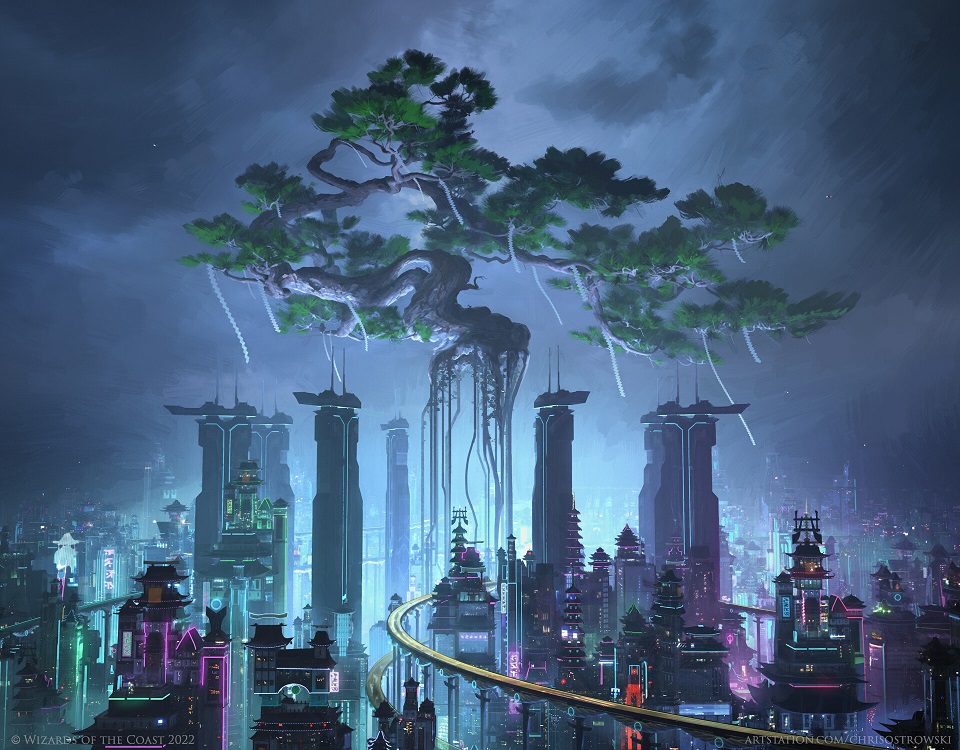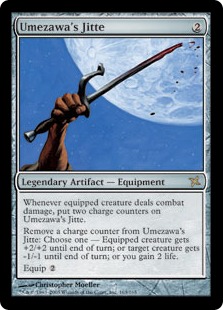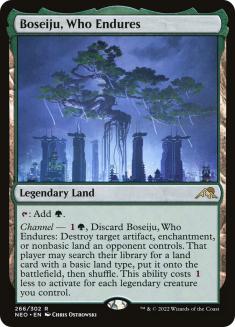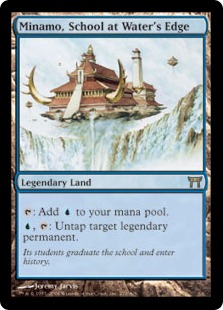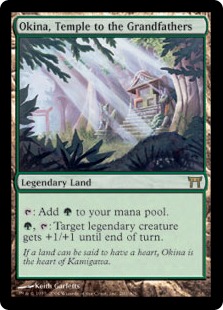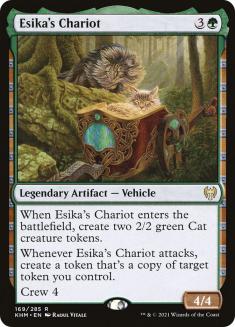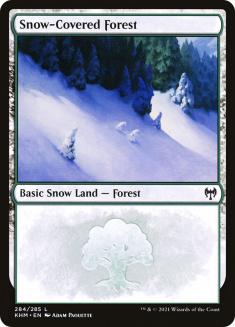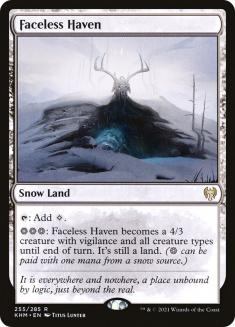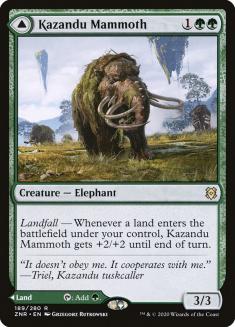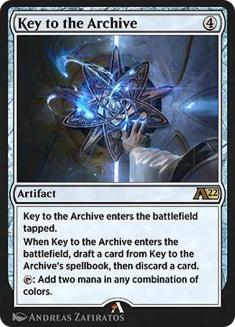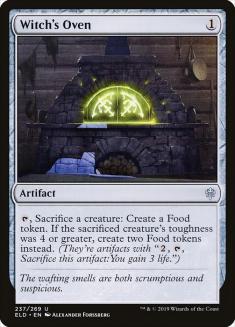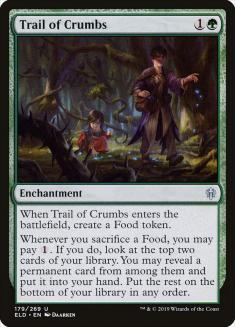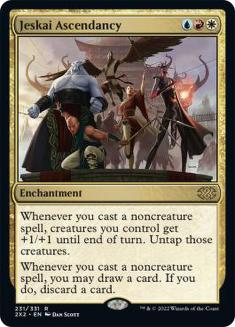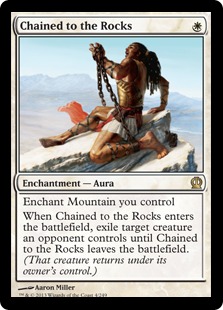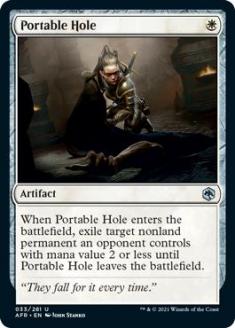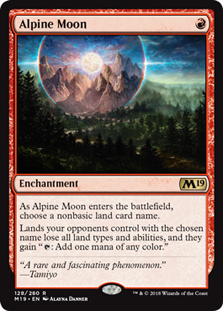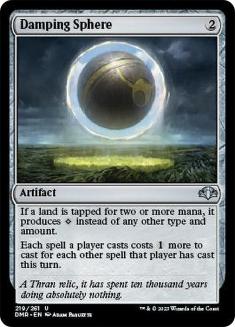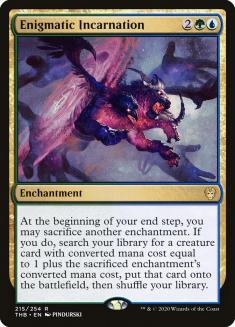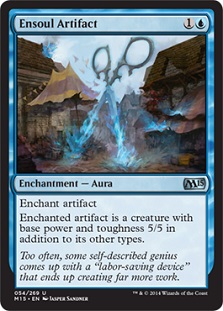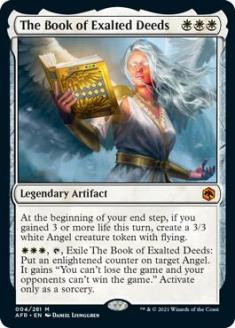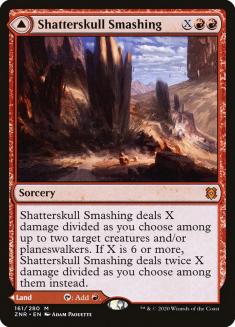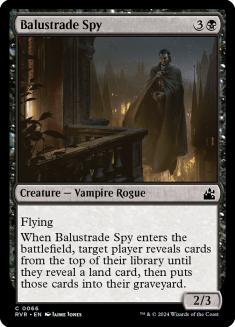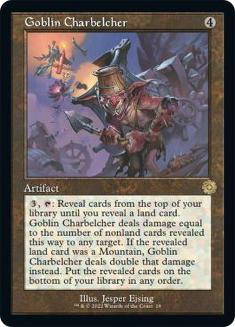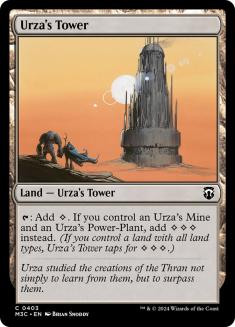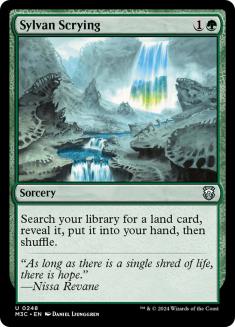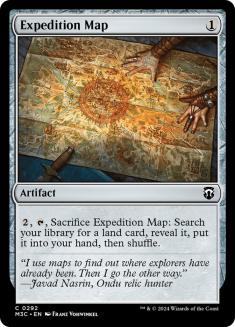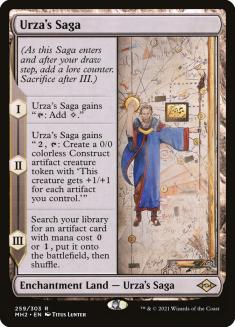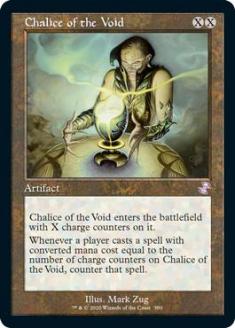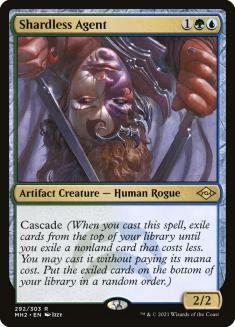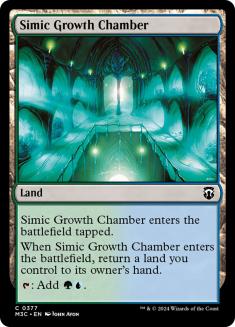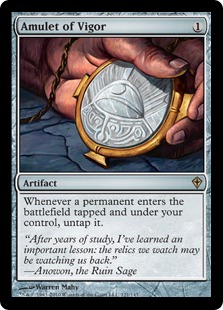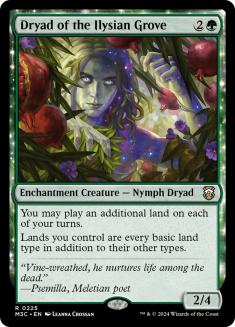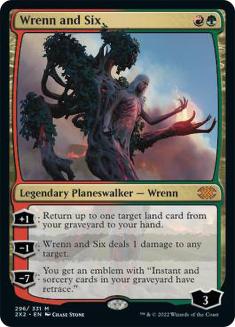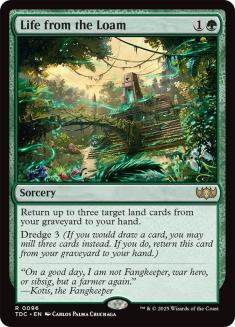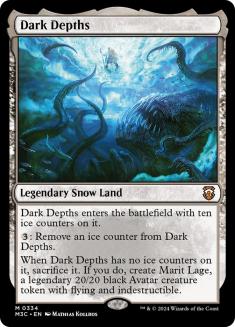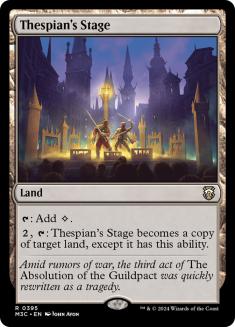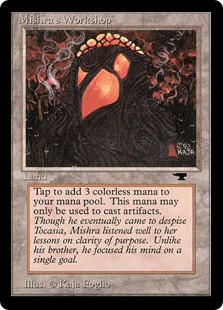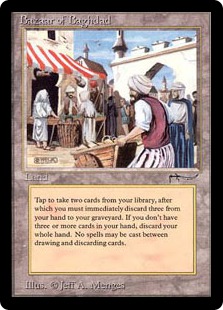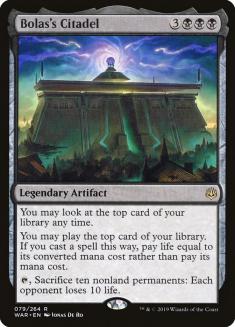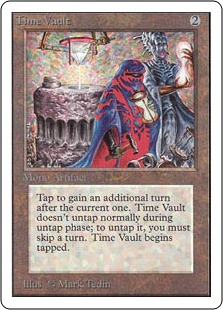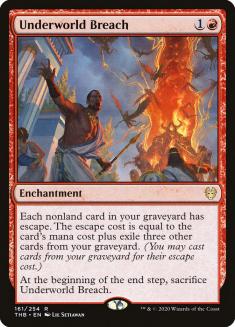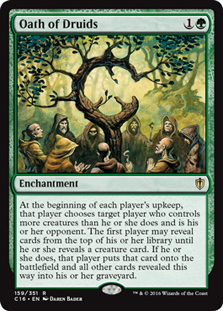When I began playing Magic and needed a deck to play with my friend, the LGS employee who knew his stuff handed me the Rat’s Nest theme deck and watched my eyes jump out on stalks as I saw Umezawa’s Jitte for the first time. I barely understood the rules, let alone strategy – how could my friend ever beat this Patron of the Nezumi?! – but even I could tell this card was unbelievably powerful.
Being introduced to the game via Jitte may have raised my expectations too high for my first preview season. For a normal set, that wouldn’t be a problem – but this wasn’t a normal set. This was Saviors of Kamigawa.
This was the ultimate test of my love for the game. If I could make it through perhaps the worst set of all time, I was going to be hooked for life. Seventeen years later, I look forward to Kamigawa: Neon Dynasty with as much excitement and nostalgia as I’ve ever had for a new set.
Our first glimpse of the set blew me away:
Boseiju, Who Endures is going to see extensive play in every format and is a game-changer for most of them. It’s incredibly easy to put Boseiju in your deck and easy to find a great use for it.
The legendary lands cycle in the original Kamigawa block came close to skirting the rule against strict upgrades to basic lands except for one crucial quirk – the legend rule introduced with Champions of Kamigawa made opposing copies of the same legend instantly self-destruct. The answer to “Why not run an Eiganjo Castle?” used to be, “My opponent might draw theirs and stop me from casting any spells.” The printed text on these lands often felt secondary to the possibility of them acting as Strip Mine.
Under the current legend rule, these concerns no longer apply. This cycle is on a comeback tour in Modern right now; Eiganjo Castle can protect your companion in Mono-White Hammer (Lurrus) while Shinka, the Bloodsoaked Keep and Shizo, Death’s Storehouse let Ragavan, Nimble Pilferer rumble in the red zone more effectively. These interactions are neat when they occur, but are only an afterthought. You play the ‘free’ first copy but there’s not nearly enough upside to play the second copy and risk drawing both.
Boseiju, Who Endures is completely different. The channel mechanic is the perfect failsafe against drawing multiples – if you use the first copy as a land, future copies can still be useful – but that only comes up if the effect is worth playing that many at all. With this Boseiju, the answer is absolutely yes – you’ll be surprised not to see the first copy and won’t bat an eye at seeing the full four.
Boseiju’s importance roughly scales with the size of the format, so its Standard applications are a good start.
With the latest round of bans eliminating its main rivals in Alrund’s Epiphany and Divide by Zero, Esika’s Chariot is back in a big way. Boseiju gives any green deck a way to contain a Chariot that threatens to run you over. It’s not a good exchange but those don’t exist where Chariot is concerned – that’s why it was in the ban conversation itself for a while.
Mono-Green Aggro, Chariot’s main home, illustrates a welcome design trend over the past few years: incentives to play a higher land count that prompt tradeoffs when building your manabase. The late Faceless Haven clashed with DFCs like Kazandu Mammoth as well as Lair of the Hydra, previously relegated to one or two copies as it couldn’t enable your superior creature-land.
With Haven gone, both Lair and Boseiju have more room to breathe – unless you still want Snow-Covered Forests for Blizzard Brawl, the best removal spell in Standard and the main reason to limit yourself to Mono-Green. Each format has its own similar tradeoffs, but it’s to Boseiju’s credit that it will usually win that argument, especially with the wider range of good targets in larger formats. The lands that it competes with also strengthen Boseiju’s case – even in the smallest card pool here in Standard, the Adventures in the Forgotten Realms creature-lands are ubiquitous and give Boseiju targets against decks with no artifacts or enchantments to care about.
The DFCs are a useful, recent comparison for this type of utility land. The DFCs have diminishing returns; you can’t have too many lands that enter the battlefield tapped (or demand a steep life payment in the case of the mythic cycle), and many of their effects are not impressive on rate. Boseiju is an untapped, pain-free source of green for a deck that needs to curve out and you’ll gladly play two mana for its effect – or less, if you can unlock that discount somehow!
A flagship of the first Alchemy expansion, Key to the Archive isn’t an appealing Boseiju target but often a necessary one, sometimes stranding an off-colour Mystical Archive card that would be tough to beat normally.
Moving up to Historic, we see decks that lean on artifacts and enchantments as well as some totally based around them:
Creatures (9)
Lands (23)
Spells (28)

If this first look at Kamigawa: Neon Dynasty is any indication, enchantment-themed decks from Selesnya Enchantress to the various takes on Auras will gain even more from this set. Boseiju is an interesting wrinkle for Pioneer’s recent combo turn:
Four-Color Jeskai Ascendancy (Jegantha) is one of the best decks in Pioneer in part because most decks struggle to interact with an enchantment pre-sideboard. Boseiju is a flexible and eminently maindeckable answer to both Jeskai Ascendancy and the deck’s main form of interaction; most lists have either Portable Hole or Chained to the Rocks.
Boseiju doesn’t hit Lotus Field, but that’s excusable; almost nothing does. A land with hexproof is impossible to interact with through conventional means, forcing people who want to shut down Lotus Field to pursue narrow measures like Alpine Moon and Damping Sphere. Boseiju gives Lotus Field Combo an answer to these cards (and other issues like Deafening Silence) that’s accessible via Sylvan Scrying (and much more efficient than Blast Zone) that can also be your Turn 1 green source for Arboreal Grazer.
Part of the charm of these larger formats is running into random nonsense, and Boseiju gives you broad coverage there. In particular, Boseiju hits not just The Book of Exalted Deeds but the Mutavault or Faceless Haven making the opponent immortal post-combo.
All of these applications so far are reactive. In Modern, Boseiju can be offensive in every sense of the word.
Gruul Charbelcher and Oops All Spells are two pure combo decks in the ascendant right now. By necessity both decks’ manabases consist entirely of the Zendikar Rising DFCs, making Boseiju a straight-up Sinkhole. Goblin Charbelcher itself, the namesake of one deck and the backup plan for the other, demands an immediate answer, and Boseiju has your back there too.
The occasional success of Mono-Green Tron is a useful reminder that hate doesn’t do its job by itself: people actually have to put it in their decks. If you register Mono-Green Tron in a tournament, you know that your opponents could show up with anything from Break the Ice to Cleansing Wildfire to Obsidian Charmaw – but why would they, when those cards are only really effective against Tron and nobody is choosing to play Tron right now?
Boseiju is less effective than these cards when used against Tron but, crucially, is more effective everywhere else. People will put Boseiju in their decks for many other reasons and they will improve their Tron matchup considerably without even trying. Boseiju can even handle threats like Wurmcoil Engine or a Karn, the Great Creator target if drawn too late to decommission Urza’s Power Plant.
There’s one consolation for Karn lovers: Boseiju is a fantastic tool for Mono-Green Tron! The most popular Tron hate currently is Alpine Moon and Blood Moon. Boseiju is a searchable answer for both that’s also phenomenal in the mirror and against many of the combo decks that can race you. You need a few Forests, not least because of Boseiju, but I think running a full set of Boseiju is totally plausible. Drawing additional copies is barely a drawback; if you’re playing multiple non-Tron lands, you have much larger problems.
Boseiju makes it much easier for a range of decks to interact with Urza’s Saga, a compelling argument by itself. The draws from Orzhov Hammer (Lurrus) that can’t equip Colossus Hammer quickly but can play an Urza’s Saga game are less reliable now; Boseiju even hits those fast Hammer draws too.
The mana value restriction on the cascade spells feels mild in Modern. For any kind of effect, you can find a spell (often a free one!) that technically costs three or more and does the job. Boseiju is a welcome addition to that roster. The ability to interact with lands before three mana is unique for these decks. As a Naturalize, it overlaps with cards like Force of Vigor or Foundation Breaker, but being a land first and foremost is highly relevant. One recurring issue with Temur Crashcade is needing to get to three mana to meaningfully participate in the game but not having the usual cheap cantrips to allow a low land count or the flood insurance to justify a higher one. A land / premium interaction split card is just what you need.
Most importantly, Boseiju is an uncounterable, instant-speed answer to Chalice of the Void that guarantees you a turn cycle with your cascade spell unlocked.
You could hear the cheers from across Canada when Boseiju was previewed. Competition for land slots in Amulet Titan is stiffer than it’s ever been, but Boseiju has a VIP seat reserved here. The strength of Amulet Titan and its multiple, overlapping toolboxes is that changing one card in the deck can have a dramatic impact on how a matchup plays out; the first Boseiju gives you a dozen virtual copies between Tolaria West, Expedition Map, and Primeval Titan.
A Titan trigger finding Boseiju and a bounceland gives you coverage against a vast range of situations without the steep mana and timing restrictions on transmuting Tolaria West. In particular, with Amulet of Vigor on the battlefield, you can give Titan haste via Slayers’ Stronghold or Hanweir Battlements first and still fetch plus pick up Boseiju with just enough mana left over on the second trigger.
This, in turn, gives you solutions to a lot of problems without having to hedge awkwardly in other ways. One reason that Izzet Midrange is such a tough matchup is that you have to respect the threat of Blood Moon but the usual counterplay like Force of Vigor is embarrassing against their many other effective angles of attack. With Boseiju, you have a clean, low-cost answer that also dodges things like Counterspell.
Despite that it’s not clear the printing of Boseiju is much of a net benefit for Amulet Titan, which now has to worry about any of its best setup cards – Amulet of Vigor, Urza’s Saga, or Dryad of the Ilysian Grove – being destroyed out of nowhere from any green deck! I overrated the impact that Assassin’s Trophy would have on Amulet Titan and effects like Cleansing Wildfire didn’t move the needle much, but Boseiju is a much stronger version of these cards.
I’ve referred to the ‘first’ Boseiju a lot here – what if the first Boseiju was also the second (and the third, and…)?
Wrenn and Six has somehow flown under the radar as one of the most obnoxious designs in Modern: a cheap card that severely limits which creatures you can justify playing, gives fetchlands yet more help that they really don’t need, and usually ends up in you taking the same game action every turn (often with a round of shuffling involved). Boseiju lets Wrenn unleash a fresh hell on the format: a recursive removal spell that forces the opponent to search and shuffle every turn if they want to have any resources left.
The first Boseiju is a shoe-in for any Wrenn deck. Additional copies may be harder to fit, especially for a deck like Four-Color Control (Yorion) that has specific colored mana requirements that Boseiju doesn’t help with, but a less colorful deck can lean on this harder. A normal Gruul Midrange will enjoy this interaction, but it lets you pursue a highly abnormal Gruul deck too:
Boseiju may finally drag Life from the Loam into Modern in a big way, but I’m very excited for that setup in Legacy. The Lands decks now have a flexible, reusable answer to whatever ails them. You can lock the opponent out of doing anything useful over time or swat away a Wasteland or Karakas to enable a fast Dark Depths + Thespian’s Stage kill.
The list of cards legal in Vintage but not Legacy are largely absurdly powerful artifacts, enchantments, and nonbasic lands. Boseiju is an excellent catch-all against most of the egregious nonsense in the format – if you live that long!
I’ll let Sheldon handle the card’s role in Commander. This is ‘just’ a strong removal spell in Limited. Suffice to say, if you’re playing a Constructed format where you can register Boseiju, that format is about to change in a big way.

